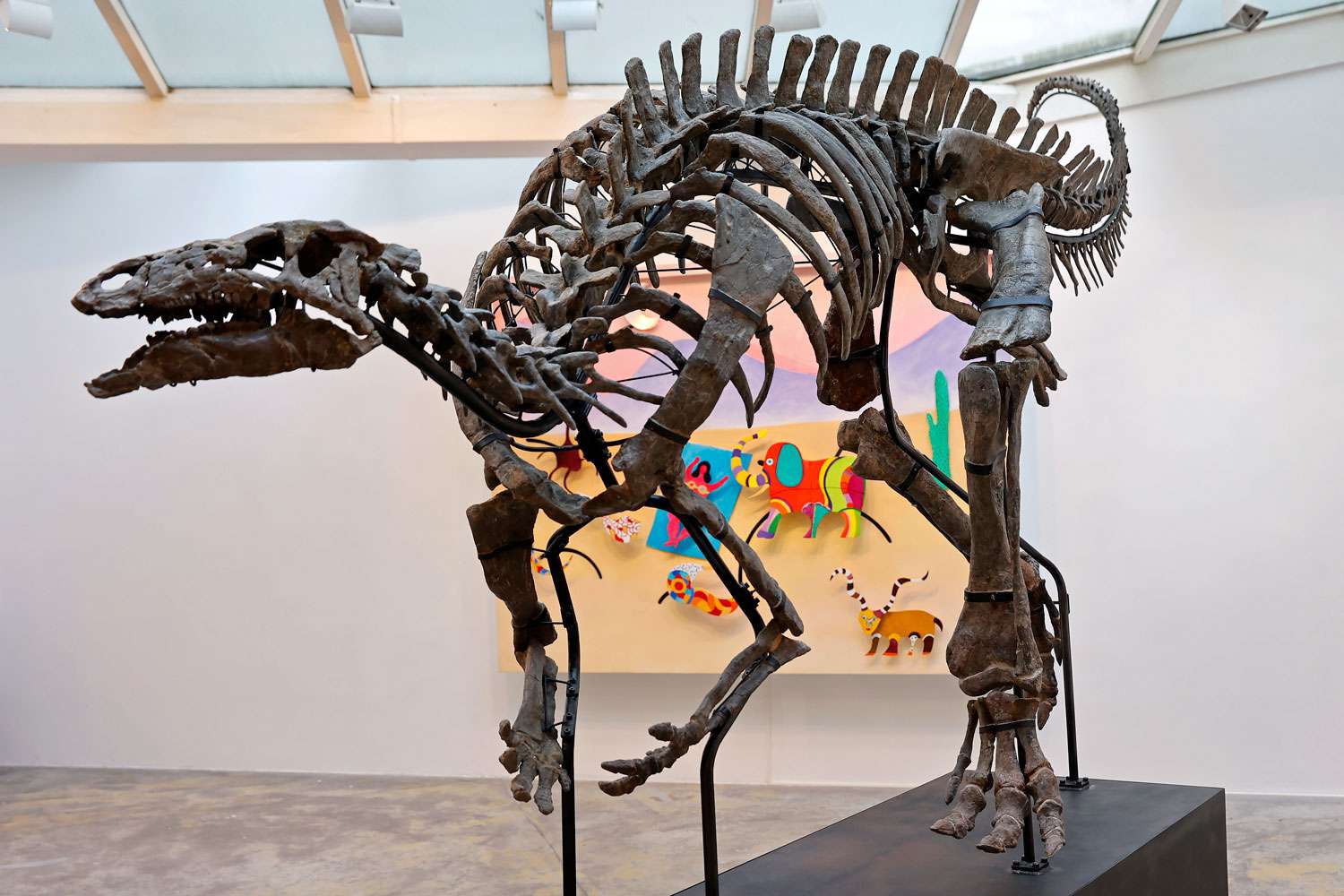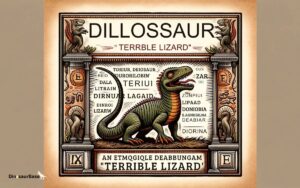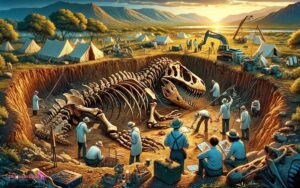How are Dinosaurs Unique? Unearthing Prehistoric Marvels!
Dinosaurs are unique due to their massive size and their reign as dominant terrestrial vertebrates for over 160 million years. Their diversity in form and function sets them apart from other creatures.
Dinosaurs captivated our imagination since their fossils were first discovered, embodying the prehistoric world’s mysteries. These ancient reptiles, ruling Earth during the Mesozoic Era, encompassed a wide range of shapes, sizes, and ecological niches. From the towering long-necked sauropods to the fierce, sharp-toothed theropods, dinosaurs showcased evolutionary innovation unseen in today’s fauna.
Their adaptation to various environments enabled them to thrive globally. The extinction of dinosaurs about 66 million years ago, likely due to a catastrophic asteroid impact, marked the end of an era but also paved the way for mammals’ rise. Scientists continue to unravel dinosaur secrets, providing insights into paleobiology and Earth’s geological history through advanced technologies and fossil discoveries. This continuous research keeps the story of these fascinating creatures both relevant and continually evolving as part of natural history.

The Rise Of Dinosaurs
The Rise of Dinosaurs is a tale of evolution, adaptation, and eventual dominance. These ancient beasts roamed the Earth millions of years ago, yet they continue to captivate our imagination. Understanding their ascent provides a glimpse into the intricate web of prehistoric life.
Dawn Of The Triassic Period
The Triassic Period marked the beginning of a new era. Prior to the dinosaurs’ emergence, the Earth witnessed a mass extinction. The Triassic landscape consisted of diverse ecosystems, allowing evolutionary experimentation.
Dinosaurs began as small, two-legged creatures and diversified rapidly. Their distinct characteristics included:
- Hollow bones that made them light and agile.
- Advanced respiratory systems for more stamina.
- An efficient reproductive strategy of laying eggs.
Jurassic To Cretaceous Dominance
During the Jurassic period, dinosaurs evolved into a wide array of species. Sizes ranged from small to gigantic. Predators became more fierce. Herbivores grew massive and diverse. This period also saw the rise of flying pterosaurs and early birds.
The Cretaceous period celebrated the peak of dinosaur diversity. Iconic giants like Tyrannosaurus rex emerged, creating complex food webs. A snapshot of dinosaur life during this time includes:
| Environment | Common Dinosaurs | Diet |
|---|---|---|
| Tropical forests | Triceratops | Plants |
| Semi-arid plains | Velociraptor | Meat |
| Coastal areas | Spinosaurus | Fish, meat |

Credit: www.amazon.com
Majestic Sizes And Forms
Picture the Earth, millions of years ago, with creatures so vast they shook the ground. Dinosaurs stood out for their majestic sizes and forms. From towering giants to fierce predators, their diversity captivates us even today. Let’s explore the magnitude of these prehistoric wonders.
Titanic Herbivores And Predators
The dinosaur kingdom boasted some truly enormous herbivores. Imagine the Brachiosaurus, its head reaching into the treetops, weighing as much as five elephants. Predators were no less imposing. The Tyrannosaurus Rex, with its powerful jaws, was a force to be reckoned with.
Diversity In Structure And Size
Dinosaurs displayed a remarkable range in structure and size. This diversity allowed them to dominate various ecological niches:
- Small sprinters: like Velociraptors, were agile hunters.
- Armored giants: such as Ankylosaurus, wielded club-like tails.
- Tiny flyers: Pterosaurs soared the skies with grace.
| Dinosaur | Type | Estimated Length |
|---|---|---|
| Compsognathus | Predator | 1.2 meters |
| Stegosaurus | Herbivore | 9 meters |
| Argentinosaurus | Herbivore | up to 30 meters |
Adaptations For Survival
Dinosaurs thrived for millions of years. Their success came from amazing adaptations. These adaptations helped them survive and evolve. Let’s explore their unique survival features.
Feathers, Scales, And Armor
Dinosaurs displayed a variety of body coverings. These were not just for show. They had real purposes.
- Feathers: Some dinosaurs, like the Velociraptor, had feathers. This might have kept them warm. It may have also helped in mating displays.
- Scales: Many dinosaurs had tough, protective scales. Think of the massive Triceratops. These scales shielded them from predators and the environment.
- Armor: The Ankylosaurus had heavy armor and club-like tails. This was their defense mechanism. Their armor made them walking fortresses.
Dietary Specialization And Hunting Techniques
Dinosaurs evolved to eat different foods. This let them live in many places. They had unique ways to hunt and eat.
| Dinosaur | Diet | Hunting Technique |
|---|---|---|
| Tyrannosaurus Rex | Carnivore | Powerful bite with sharp teeth |
| Brachiosaurus | Herbivore | Long neck to reach high vegetation |
| Stegosaurus | Herbivore | Low grazing and spike-tail defense |
Hunting techniques varied. The fast and agile predators hunted in packs. Slow giants used their size and strength. This allowed dinosaurs to dominate for ages.

Credit: www.walmart.com
Behavioral Mysteries Unveiled
The Behavioral Mysteries Unveiled of dinosaurs stirs a wave of curiosity among scientists and enthusiasts alike. While bones and fossils provide a blueprint of their physical stature, the soft footprints of their behavior are harder to trace. Yet, recent discoveries have cracked open a window into their once-secret social lives.
Social Hierarchies And Herding
The discovery of trackways and bonebeds gave clues to social structures in dinosaur communities. Evidence suggests that some species lived and traveled in groups. Just like with modern elephants and wolves, these groups likely had a pecking order. Certain dinosaurs may have led the herd, teaching the young and leading the migrate.
- Tracks with varying sizes indicate group travel.
- Fossil beds show dinosaurs died together in floods.
- Herding might have been for protection or mating.
Insights like these show a more complex picture than the solitary predators we once imagined.
Nesting Habits And Offspring Care
Dinosaurs, much like birds, built nests for their young. The structure and location of these nests reveal much about their care for offspring. For instance, the oviraptorids built open nests, likely to brood over their eggs. This behavior is a hallmark of parental care.
| Type of Dinosaur | Nesting Style | Parental Involvement |
|---|---|---|
| Oviraptorids | Open nests | High brooding behavior |
| Hadrosaurids | Ground nests in colonies | Group care potential |
| Sauropods | Scattered nests | Less known about care |
From the communal nesting grounds of hadrosaurids to the scattered pits of sauropods, each pattern hints at their reproductive strategies and social behavior.
Why Dinosaurs Remain Unmatched
The prehistoric world teemed with fascinating creatures, yet dinosaurs stand out. Their size, diversity, and complex lives continue to captivate scientists and the public alike. Through paleontological discoveries, we better understand why these ancient beasts remain unmatched in the annals of Earth’s history.
Unique Bone Structures
Dinosaurs boasted distinctive skeletal features that set them apart. Hollow bones made some dinosaurs light enough to defy gravity and dominate the skies. Gigantic sauropods, on the other hand, had massive vertebrae that supported their enormous size. These structures allowed for remarkable physical abilities and an imposing presence no modern animal can claim.
- Hollow bones in flying dinosaurs for agility
- Reinforced skeletons supported massive creatures
Beyond size, dinosaur bones show evidence of advanced muscle attachments and movement capabilities. Velociraptors, with their sharp, retractable claws, were built for precision and killing efficiency. Their unique anatomy continues to underscore the unmatched adaptations within the dinosaur lineage.
The Great Extinction Event
The end of the Cretaceous period brought about a catastrophe that wiped out dinosaurs. Known as the K-T extinction event, this sudden change left a gap in history. While tragic, it emphasizes dinosaurs’ exclusivity — no other creatures experienced such a stark, widespread obliteration.
Dinosaurs reigned for approximately 165 million years, a testament to their evolutionary success. Their sudden disappearance from the fossil record underscores both their lengthy tenure and the fact that their extinction remains a singular event.
Impact theory suggests a cosmic collision altered Earth’s climate, leading to the end of the age of dinosaurs. This event highlights the sensitivity and fragility of life on our planet. It also underscores the unmatched scale of dinosaurs’ existence and their abrupt departure from our world.
Rediscovering Dinosaurs Today
The tales of dinosaurs ignite curiosity across all ages. Their existence seems like a distant storybook adventure. Yet, recent advancements have brought them closer to us than ever before. It’s a journey of rediscovering dinosaurs today, where each discovery connects us to the world that roamed millions of years ago.
Fossil Discoveries And Insights
Fossil discoveries are pivotal in shaping our understanding of dinosaurs. Every unearthed bone is a clue to the past. Here are some insights gained:
- New species identified from distinct bone structures.
- Behavioral patterns speculated from fossilized footprints.
- Environmental adaptations inferred from tooth and skull examinations.
Technological Advances In Paleontology
Technology has revolutionized the study of ancient life. Paleontologists now use cutting-edge tools to unveil secrets of the past. These include:
| Technological Tool | Function |
|---|---|
| CT Scanning | Offers a 3D view of fossils without damaging them. |
| Isotope Analysis | Helps determine dinosaur diets and migration. |
| Laser Scanning | Creates precise digital models of dinosaur remains. |
These technologies are game-changers for paleontology, delivering insights that were once thought impossible.

Credit: isp.page
Conclusion
Dinosaurs, with their unparalleled size and fascinating biology, evoke awe like no other creatures from the past. Their reign on Earth offers invaluable insights into evolution and extinction. As science continues to uncover their secrets, our understanding of these magnificent animals deepens.
Let’s keep exploring the ancient world they dominated, celebrating the uniqueness that makes dinosaurs endlessly captivating.




